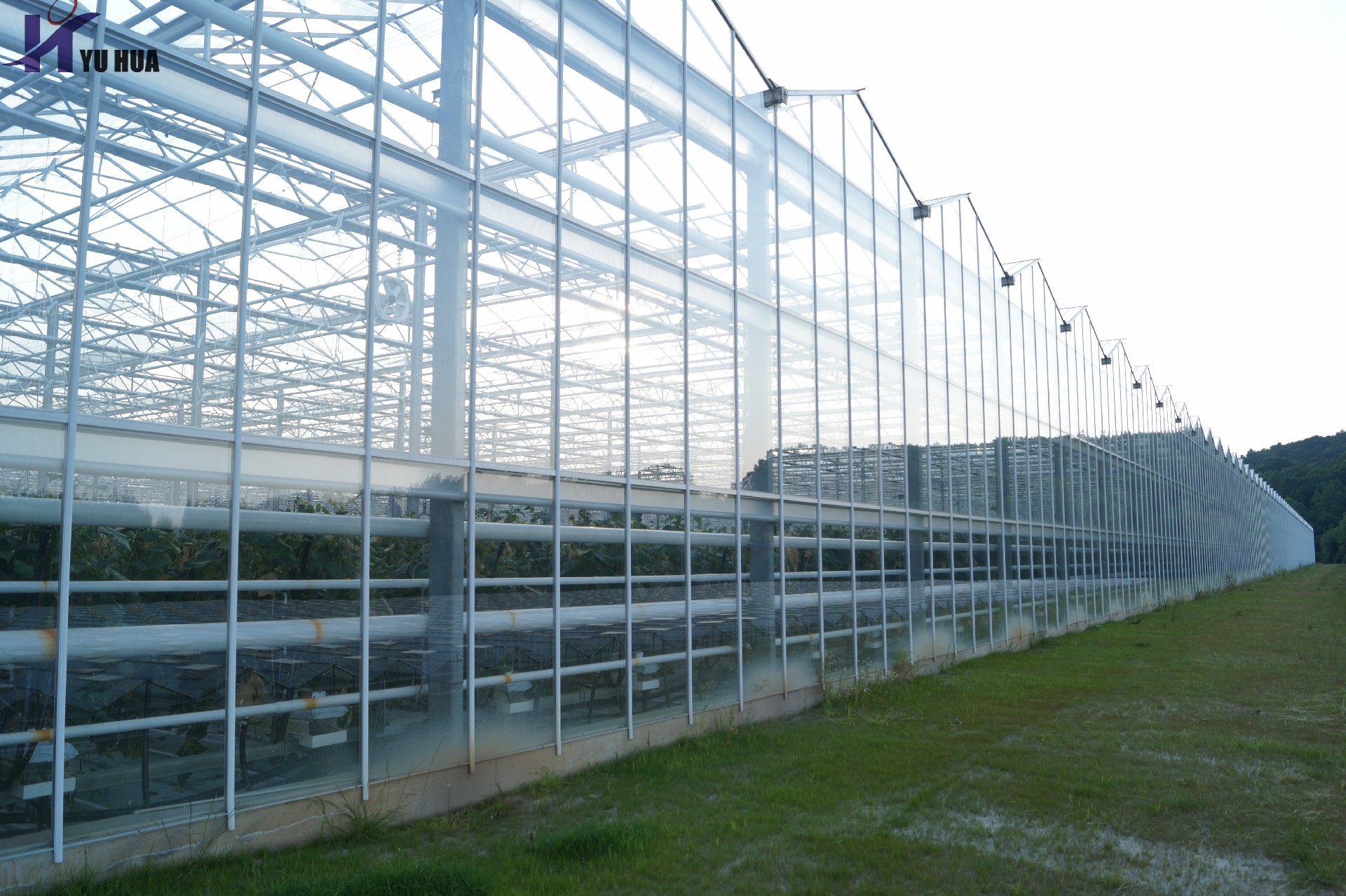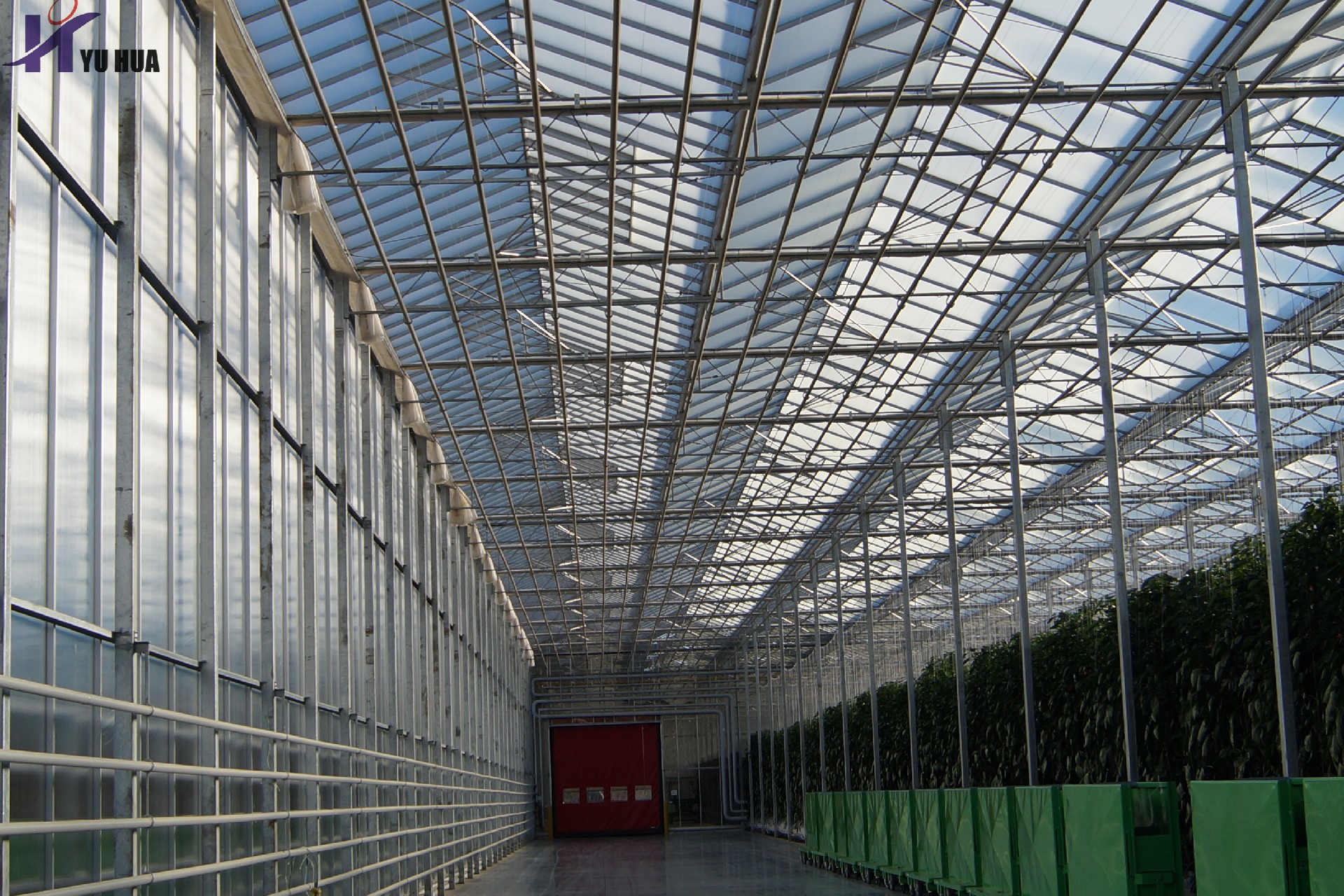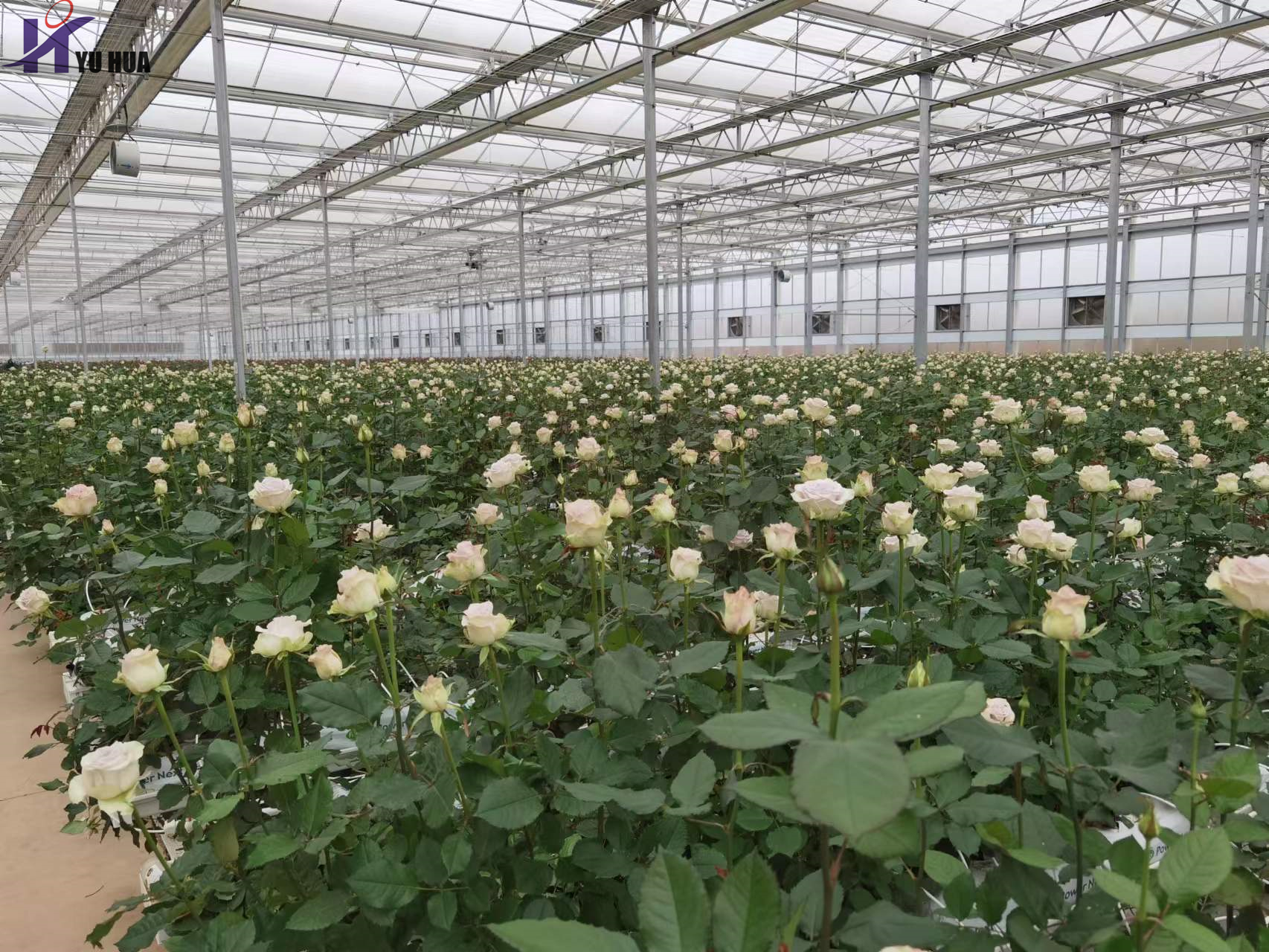
What specifications are usually used for diffuse reflective glass in glass greenhouses?
Diffuse reflective glass is a general term for a type of glass with a wide range of uses, especially in buildings. What I want to talk about next is the diffuse reflective glass used on the greenhouse. The diffuse reflective glass on the greenhouse was not called diffuse reflective glass at first. For some reasons, it spread among some people. The diffuse reflective glass on the greenhouse was not called diffuse reflective glass. There are other names, such as: scattering glass, anti-reflective glass;

To understand scattering glass, we first need to know what haze is: a beam of light is deflected after passing through the glass. The illumination within 2.5° is direct light, and the illumination beyond 2.5° is scattered light. The ratio of scattered light to direct light is haze.
Scattering can be understood as haze. The greater the haze, the higher the scattering; the smaller the haze, the lower the scattering;
The relationship between haze and hemispheric transmittance is: the greater the haze, the higher the scattering, and the lower the hemispheric transmittance; the lower the haze, the lower the scattering, and the higher the hemispheric transmittance.
The higher the hemispheric transmittance of glass, the higher the light received inside the greenhouse. The average daily light received by crops in the greenhouse is 1-2 hours higher than that of other types of glass;
The second is the concept of anti-reflective glass. Generally speaking, anti-reflective glass is the coated version of scattering glass. The coated scattering glass not only has different haze specifications, but also has higher light transmittance. At present, the highest light transmittance of anti-reflective glass reused in greenhouses is 97.5%.
Diffuse reflective glass for greenhouses, that is, scattering glass and anti-reflective glass, has four main specifications.
They are: size, transmittance, thickness, quantity;
The light transmittance of scattering glass is 91.5% and the price is around 40 per square meter (for reference). The anti-reflective glass after coating has a light transmittance of 97.5% and the price is around 60 per square meter (for reference);
The thickness of greenhouse scattering glass and anti-reflection glass is 4mm and 5mm. Generally, we choose the 4mm thickness specification. 4mm is cheaper than 5mm, and its light transmittance is 1% higher.
Therefore, when purchasing greenhouse diffuse reflective glass (scattering glass, anti-reflective glass) in the greenhouse, follow the following methods:

First, confirm the glass size
Note: It is best to confirm this with the manufacturer in advance. The final designed size must be in line with the size of the glass factory, and then the size of the glass can be designed into it. This can minimize losses and get the glass at the ex-factory price.
Second, confirm the glass thickness
Note: If the area is not particularly cold and the gas bill is particularly expensive, we can directly choose 4mm thick diffuse reflection glass. If there are special requirements for greenhouse insulation and the lighting environment is good, you can choose a thickness of 5mm. The price of 4mm is cheaper than that of 5mm, and the light transmittance of 4mm is higher than that of 5mm.
Third, confirm the light transmittance specifications
Note: The transmittance of diffuse reflection glass is divided into two specifications: 91.5% and 97.5%. For greenhouses with particularly large planting areas and strict lighting requirements, we can directly choose glass with a transmittance of 97.5%. Glass with a light transmittance of 97.5% has a better yield-increasing effect than a glass with a light transmittance of 91.5%, and the total production capacity produced is several percentage points higher than that of 91.5%.
Point 4: Confirm the glass haze
Note: The haze of diffuse reflective glass is the main attribute of greenhouse glass. We need to choose according to the environment where the greenhouse is built, lighting conditions, and crop preferences. The difference in hemispheric light transmittance has a greater impact on planting crops, and can be selected according to the business recommendations of the glass factory.
Fifth point, actual factory inspection
Note: Diffuse reflective glass is a customized product, and only domestic manufacturers can make it. It does not mean that diffuse reflective glass can be installed on a greenhouse. The main thing is to look at the optical properties of the glass. You must go to the factory for inspection. You must go to the factory for inspection. You must go to the factory for inspection.
Finally, let me summarize: What are the specifications of the diffuse reflective glass used in the greenhouse?
Size: around 900x1000
Thickness: 4mm > 5mm
Light transmittance: 97.5% > 91.5%
Haze: 10, 20, 30, 40, 50, 70, 75 options
Hemispheric light transmittance: Select according to the type of crops grown

Tags:anti-reflective glass diffuse glass agricultural greenhouses glass greenhouse venlo greenhouse AR glass greenhouses glass agricultural glass horticultural glass #greenhouseglass #Antireflectiveglass #Diffusetemperedglass #Ultrawhitefloatglass #agriculturalgreenhouseglass #diffuseglass #horticulturalglass #Tomatogreenhouse #Coloredpeppergreenhouse #Lettucegreenhouse #Agriculturalgreenhouse #ARglass #venlogreenhouse #greenhouseglass #Antireflectiveglass #Diffusetemperedglass #Ultrawhitefloatglass #agriculturalgreenhouseglass #diffuseglass #horticulturalglass #Tomatogreenhouse #Coloredpeppergreenhouse #Lettucegreenhouse #Agriculturalgreenhouse #ARglass #venlogreenhouse #GlassManufacturer #invernadero #ArchitecturalGlass #ClearFloatGlass #FloatGlass
Previous:What to do if the greenhouse glass is broken during transportation?
Next:How to choose high-quality tempered glass for agricultural glass greenhouses?



















